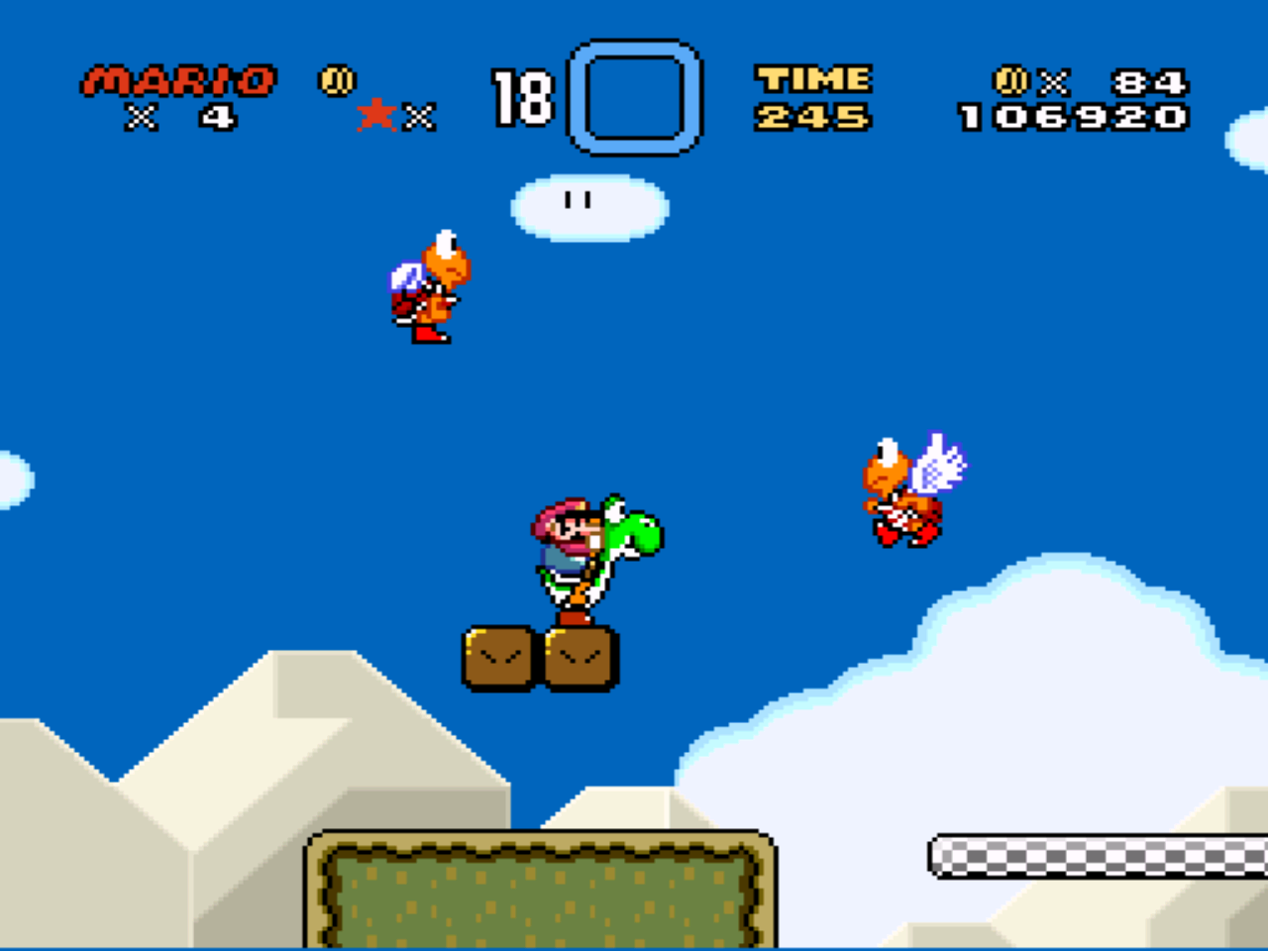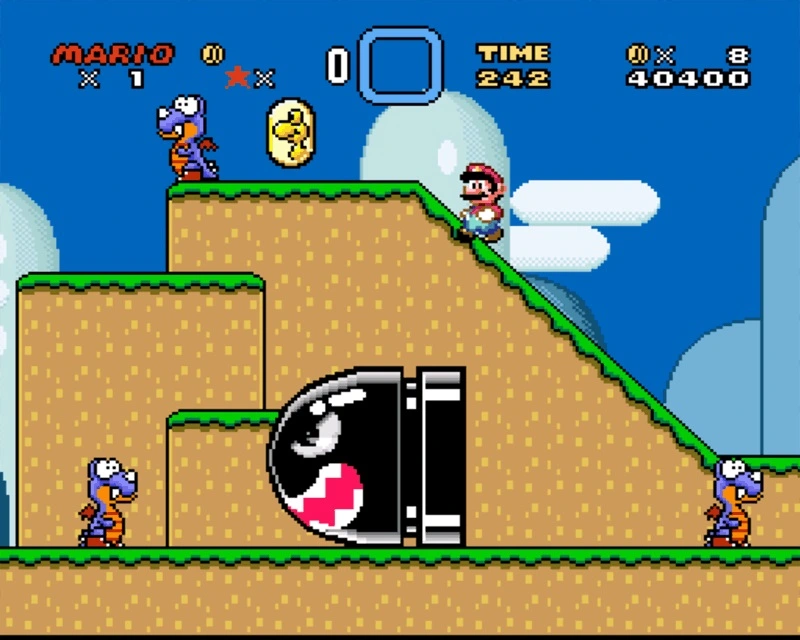Retro Review: Super Mario World (1990)
Welcome to the Retro Review section, where Ben reviews older games and looks at how they’ve held up.

As Mario races from the beginning of a level to the end, the player is met with a unique problem: in almost all instances, you have the choice of going left, right, up, or down. Obstacles and enemies aside, things are no longer as simple as getting from point A to point B.
In all manifestations of the phrase, it really feels as if Super Mario World introduced video games to the “open world”. With multiple exits, hundreds of different ways to get there and more than just a single avenue of travel, every level feels like a unique world ripe for exploration. The game encourages this via the use of shortcuts, extra lives and different forms of our protagonist — whether it be in the form of shooting fireballs, wearing a cape or riding a green, big-nosed dinosaur.
Super Mario World is Nintendo’s first break from the drab brown and blue backgrounds that fill earlier entries. The game is bright, colorful (almost to the point of excess) and clean. The latter is perhaps its biggest gameplay asset, as platforms are clearly defined and accessible. This helps feed into the rampant pace that Mario games were clearly designed for. The only downside is that the game has a tendency to clutter the screen, whether it be with several enemies wandering aimlessly or a couple of coins plus a giant bullet bill. When you include the busy backdrops (as evidence in the image below), there is a lot to take in. During the game’s more challenging levels, this becomes more of a frustration than a visual splendor.

On the topic of difficulty, Super Mario World is one of the easiest Nintendo games on early consoles. This isn’t because of any inherent mechanic, but rather how well the game controls. The player isn’t forced to use a Mario that feels like he’s on ice skates, but instead, a Mario whose movement feels balanced and fair. Jumping is also more precise, with Nintendo expertly implementing its full-press versus half-press mechanic, something that allows for smaller jumps in comparison to larger ones.
Most of the game’s difficulty comes late, where a few levels are so tightly packed with the game’s worst enemy types (Magikoopas, I’m looking at you) that things can get frustrating if you aren’t careful. All is forgiven by the time you get to Bowser’s castle, when the game gives you a series of avenues that you can take to reach the game’s final fight. Not only does it exemplify everything that is great about the game, but it presents a retrospective challenge that tests the skills you learned along the way.
Super Mario World innovates its four-way movement, asking players to move up and down, and left or right. Being the first game in the series that doesn’t consistently move from left to right, you’d expect more bumps in the road when the game asks you to move vertically or switch gears and move west instead of east. Instead, the game shines when it breaks away from traditional platforming and asks the player to explore all of their options. Tunnel vision is sure to leave players with a frustrating experience, but given how many modern games take inspiration from Super Mario World, new players will likely find it to be one of the easiest games in the series.
Having released in Japan in 1990, the game is over 25 years old. With the slew of indie platformers that have found their way to modern consoles and PC, you’d expect the game to feel out of date. Instead, you’ll find the very foundation of everything that modern platforming has become. For only $8, you can snag the game on the Wii U Virtual Console. Getting the original cartridge is likely to run a little steeper, but still absolutely worth it. Super Mario Bros is one of the most innovative games of all time, and 25 years later, it doesn’t skip a beat.
Score: 9.0
Rank: 11
Virtual Console: Yes
Worth the Price: Yes
